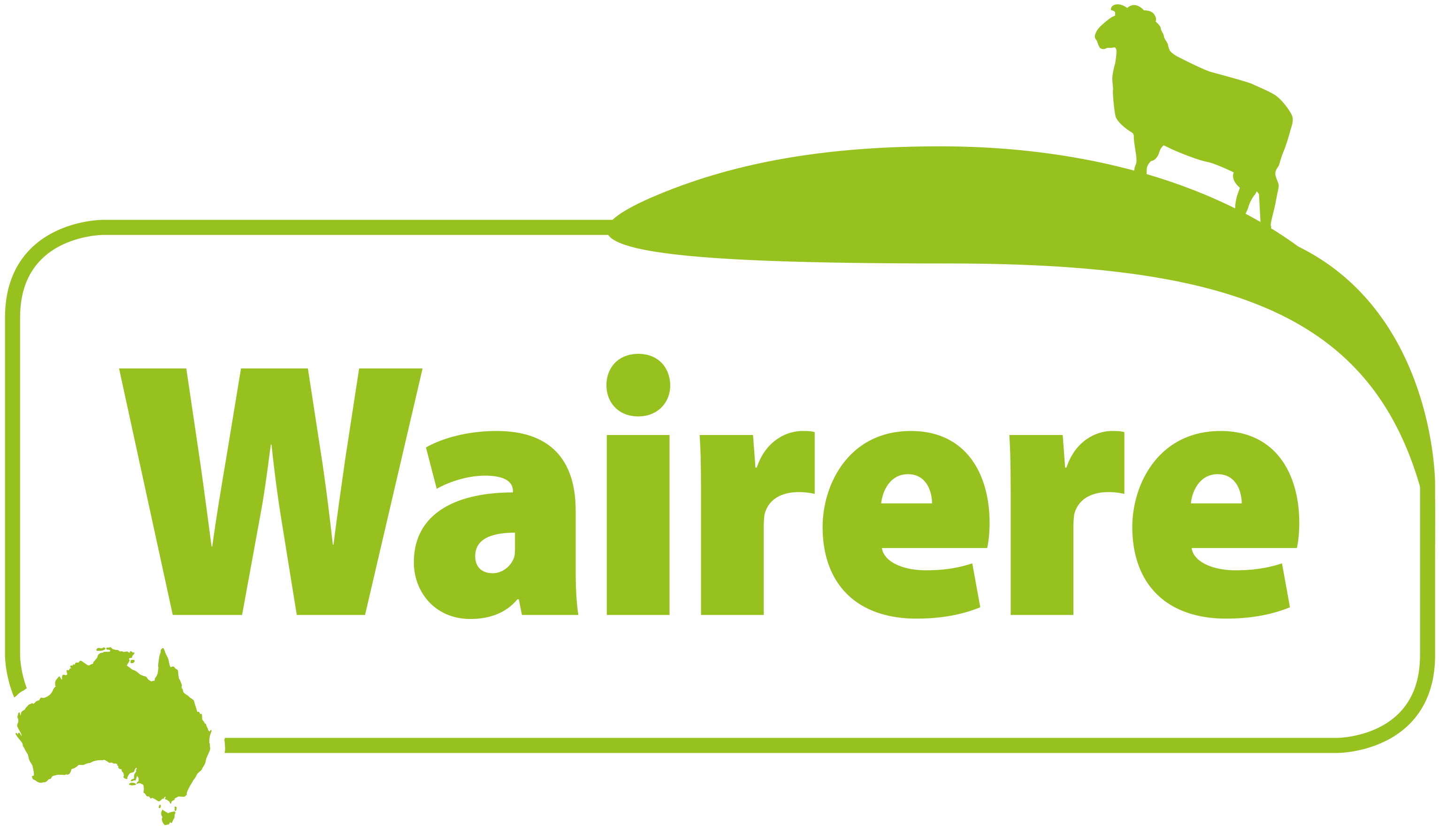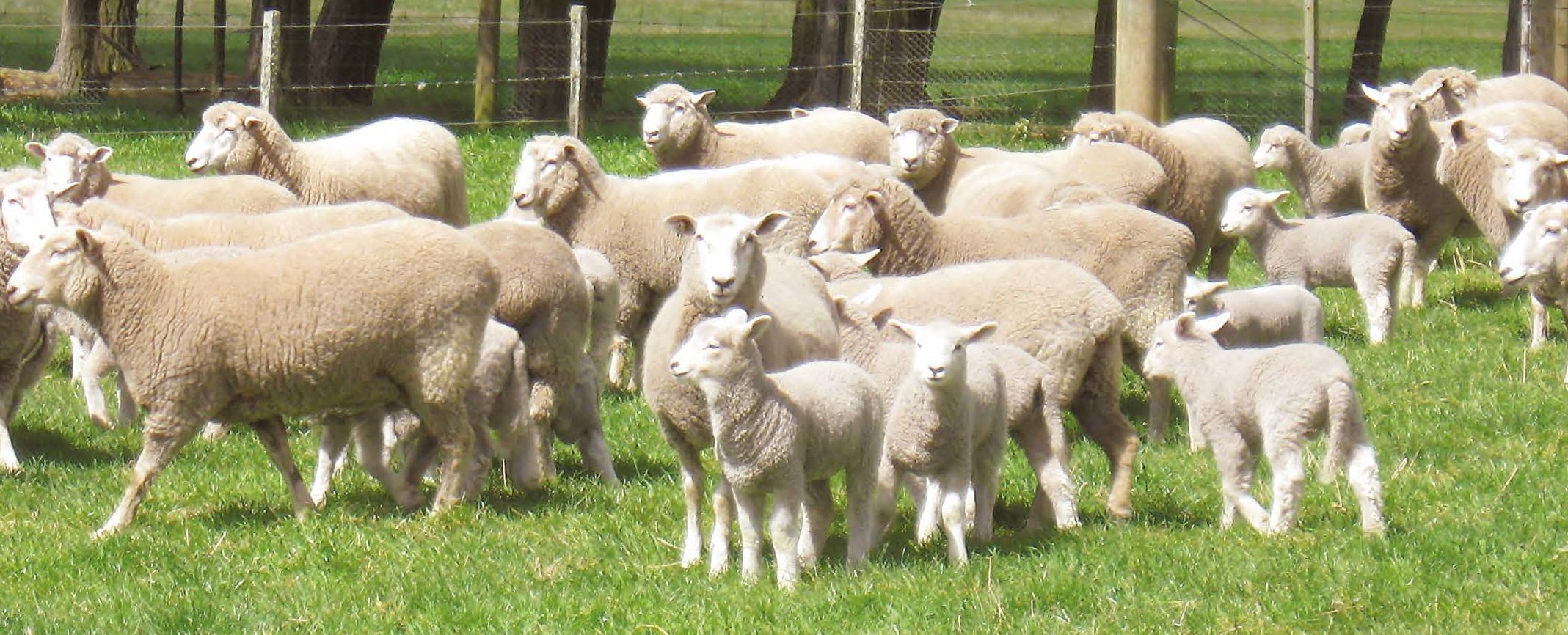Join the Winners
The Wairere Advantage
- “I’m down to one drench and vaccination per year. Breeding your own replacements has a lot going for it.”
- “They keep their condition better in both winter cold and wet, and summer dry. My feeding out costs and workload are so much lower now.”
- “The feet are a really strong attribute with these sheep. It’s really exciting to observe the mothering ability, so much better, even with the ewe lambs.”
- “I’ve got away from a huge outlay for replacement ewe lambs, and the importing of feet and animal health problems.”
- “I reached 100 percent with Merinos, but the F2 Romneys do 140. The F2 ewes clip 26-27 micron, and the woolskins sell well.”
- “Delivers 310kg carcase weight and wool per hectare. I’ve been using Wairere rams since 2006. The Wairere cross are so much tougher than the BorderMerinos that I used to run.”
- “The Wairere sheep are built like a square brick. They can grow… we took some to 30kg last year, but normally target 23-24kg, with around 50% killed at weaning.”
- “I took some through to May on a feedlot, to avoid low autumn prices. They killed at 32kg and $250.”
- “The biggest difference that I’ve noticed to date is the better survival of new born lambs in the wet and cold. They have a thicker skin and more fat.“
- “I know that I’m buying into fifty years of ruthless culling of passengers….poor structure, wet dry ewes, and ewe hoggets which don’t get in lamb.”
- “Romneys dominate the sheep scene in New Zealand, so using them here in Australia is a no brainer. I like the Wairere breeding philosophy, and I like the doing ability of the sheep, despite no drenching of mixed age ewes.“
- “I’ve always viewed the price of a ram an investment in the big picture. I always like to buy at the top end.”
90% of New Zealand Sheep are pure or part Romney
What a great year it has been…
for Australian sheep farmers. The autumn break in 2019 was late, but a kind winter and spring allowed good lamb survival in the high rainfall zone of Southern Australia. Our property at Heywood had an excellent spring followed by summer rains which resulted in ‘greenery’ in the diet almost all year, with minimal supplementary feeding required. Then bush fires were nipped in the bud by the best summer rains since 1924. The resultant rebuilding of flocks and herds has seen record prices, especially for breeding ewes which have consistently been making in excess of $300 with odd sales up to the heady heights of $470!
Lamb price has been $8 to $9 per kg for much of the selling season. Contrast that to the price in New Zealand, which fell away to $A6.50 per kg for February to June. The Australian mutton price has been stronger too.
The stage is set for those using Wairere rams. Our rams give you superior replacements and surplus ewe lambs to sell at a premium, with hybrid vigour growth rates to match terminal sires. Wairere Romneys provide a true ‘outcross’ to the common Australian breeds, ensuring hybrid vigour is maximised and resultant female progeny can be retained for breeding. Wairere Romneys have more than fifty years of selection pressure for maternal and conformation characteristics. Why use terminal sires when many farmers are rebuilding sheep numbers? The longevity, soundness and flexibility of the Wairere Romney ram make it a sensible investment in these uncertain times.
John Morrison, Camperdown. “I’ve had four years of Wairere rams now. The 4,200 mixed age ewes scanned 198% this year. That’s up 20% on last year. And the 1,400 ewe lambs scanned 106%. Coles took all the Wairere cross lambs, averaging over $200. The works ewes topped $200 as well. We are on a roll.”
Richard Davies, Halt Farms part of the FAF group, has been developing around 3,000 hectares out of eucalyptus plantations. The seven blocks, ranging in size from 200 to 450 ha, are scattered around the Branxholme and Mcarthur areas in far Western Victoria. Richard Davies, originally from Wales, and his Australian wife Ally are managing the transition. In 2019 they lambed 15,000 ewes and 5,000 hoggets with just the two of them plus one permanent tractor driver/general. The 20,000 ewes and hoggets, a mix of Composite and Wairere, tailed 30,800 lambs. That was 168% from the ewes and 112% from the hoggets. The plan is to have 30,000 ewes and hoggets lambing in 2021, as more trees are converted. The conversion process has not stinted on inputs of lime and fertiliser. Just check out the photo of 30cm high Balansa clover. Richard: “This year I’ve retired the composite rams and used all Waireres. The soundness of the Wairere feet has really shone through and resulted in a very low culling rate in the rams compared with the composites. The Romneys are more robust through summer dry and winter wet, and produce a more even line of ewes.”
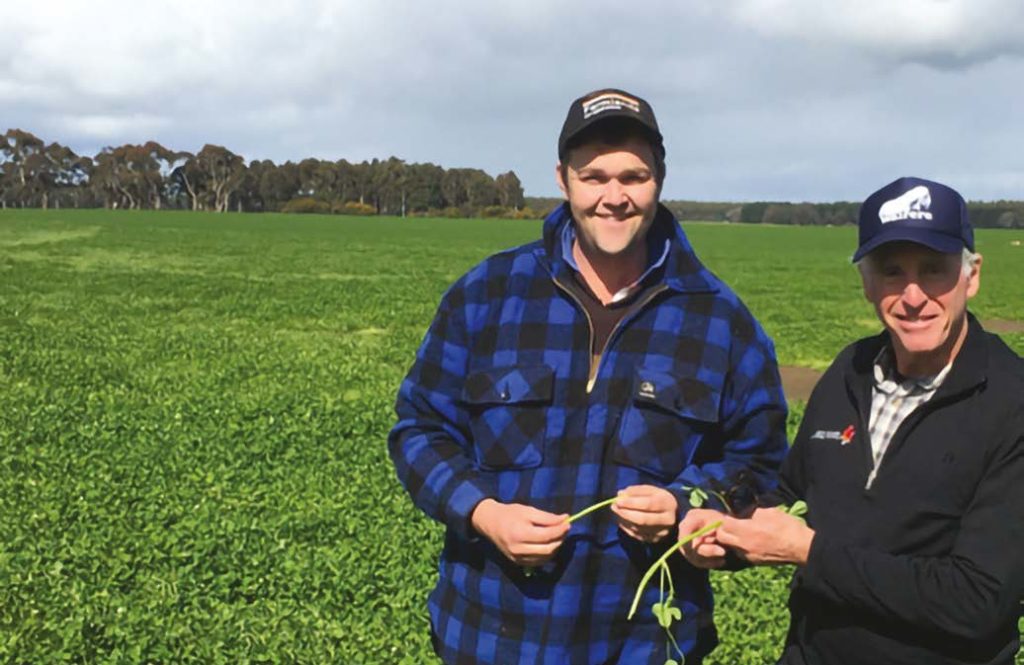
Richard Davies with a rich crop of Balansa clover, recovered from a Eucalypt plantation
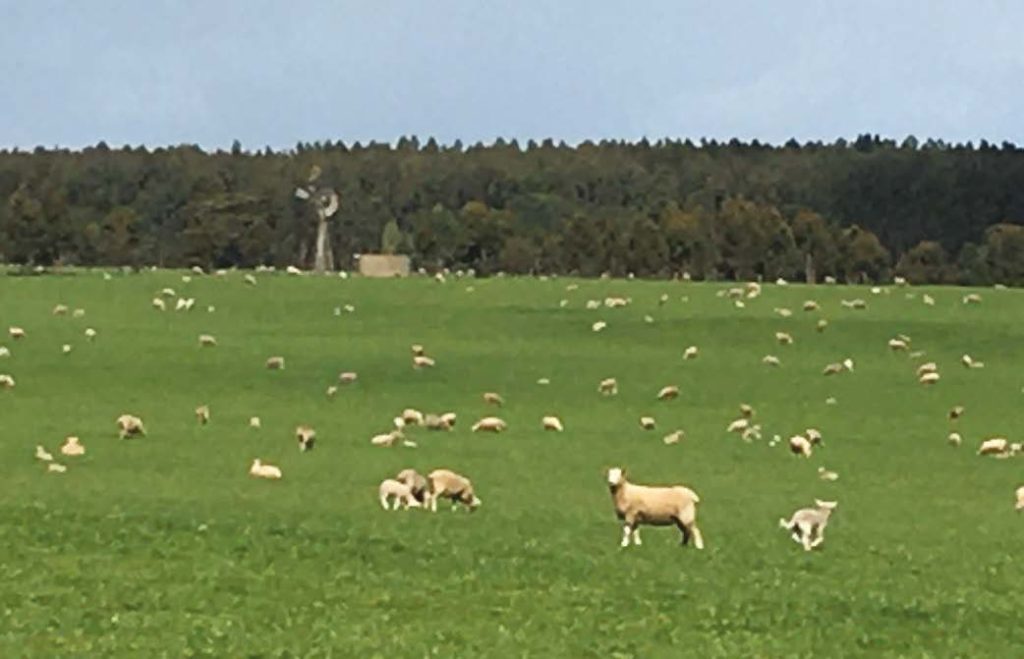
Wairere cross ewe hoggets with lambs at Halt Farms, October 2019
Consultant Phil White has been part of the conversion process since the beginning. Phil did his B. Ag Sc (first class honours) at Lincoln University, New Zealand, on the conversion of Pinus radiata plantations to pasture. Phil: “We started at Halt Farms with a clean slate: OlsenPs of <4, low pH, high weed burdens and a pulverised soil structure due to the mechanical reversion process. We have limed, applied capital P, K and S along with trace elements, cropped for weed control and established legume dominant pastures. Our aim to be able to carry 10 cross bred ewes to the hectare with minimal grain imports, which we are achieving on the more established blocks now’. Richard has been able to redesign fencing and yards infrastructure to suit large scale sheep
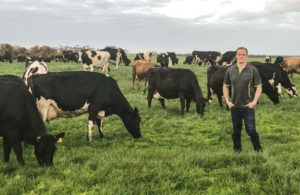
Turning grass into money: Phil White, Agribusiness consulttant and dairy farmer on his farm near Heywood.
farming. Richard and Ally use contractors for the big jobs, including weaning 10,000 ewes at a time in three days. Given the spread out nature of the enterprise, logistics are difficult, and an easy care sheep like the Wairere Romney is a must. This summer we experimented with lower cost containment, feeding rye grass/Balansa silage only, compared to silage, balage and grain last year. The result has been a scan of 178 % in the two tooth ewes, and 120% in the hoggets. But the lower cost and reduced workload will more than compensate for fewer lambs.” Phil runs his own dairy farm next door to Wairere Australia, both properties originally being a part of the sprawling 31,000 acre Ettrick Run. The dry land dairy produces 1,320 kgsMS per hectare and 570 kgs per cow, using 1.7 tonnes of supplement per cow. “Renewing 40 – 60 % of pastures every year into short rotation ryegrass, and using perennial ryegrass and phalaris pastures for quick growth after the autumn break, provides a good feed supply for calving in March/April and drying off in January. Land cost is much lower here than in New Zealand, though variable costs are higher. But supplements are usually much cheaper, so it is easy to fill in the gaps in feed supply.
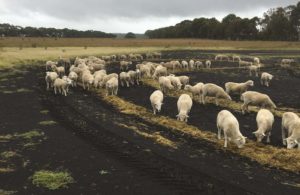
Jeremy’s ewe hoggets being fed silage, March 2020
Wairere Australia
has grown from the first 268 hectares purchased at 6585 Woolsthorpe-Heywood road in 2015. The “Ettrick” block of 389 hectares was added in 2017, and a third block of 501 hectares was bought in late 2017, because it joins the other two blocks together.
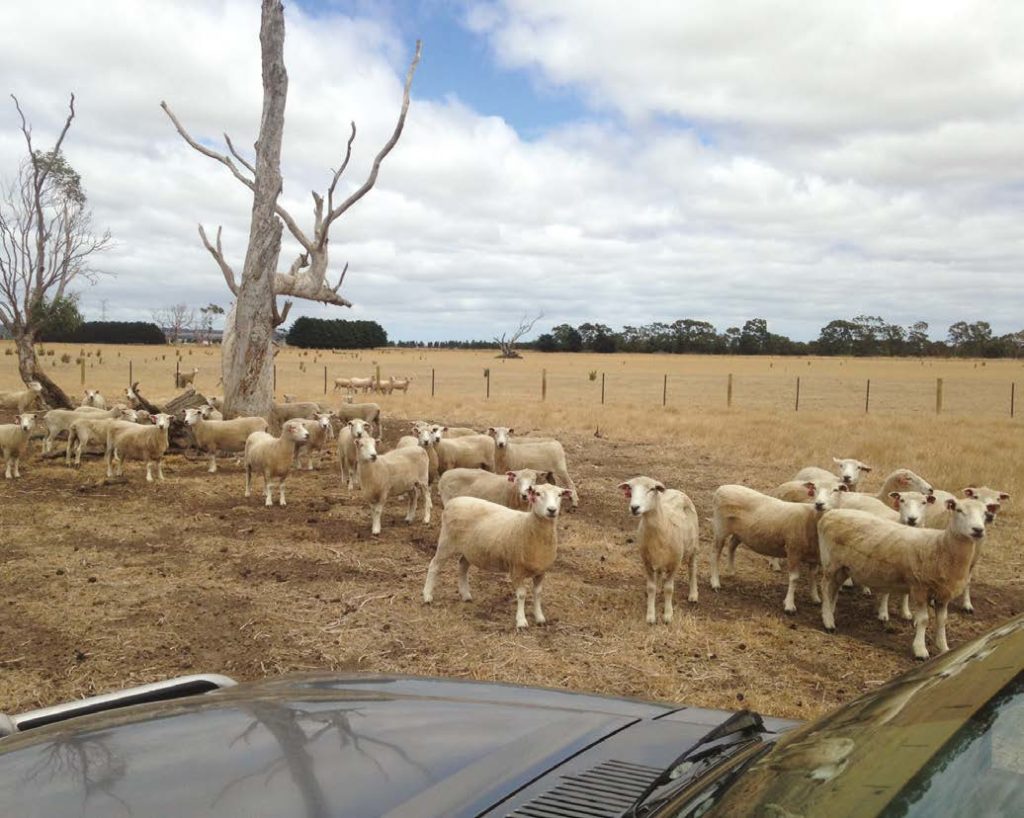
The Old Wairere. No Wairere ewes have been drenched since the originals arrived at Heywood in 2015
A rapid development program, involving capital fertiliser and lime, pasture renewal, fencing, water supply, and drainage has been converting a low production farm into one with a higher stocking rate and higher productivity.
We have around 800 hectares of black soils and rolled stone, 180 hectares of barrier country, and 180 hectares of “Deliverance country” bounding the Fitzroy river. A shallow lake of seventy hectares fills for about six months of the year, but allows a late summer feed crop.
Time will tell whether this New Zealand style development program results in a good return on capital, or whether we would have been better to have stayed with the normal, Australian low cost model. However, having Phil White’s dairy farm on one boundary is proof of the largely untapped productive capacity of this area.
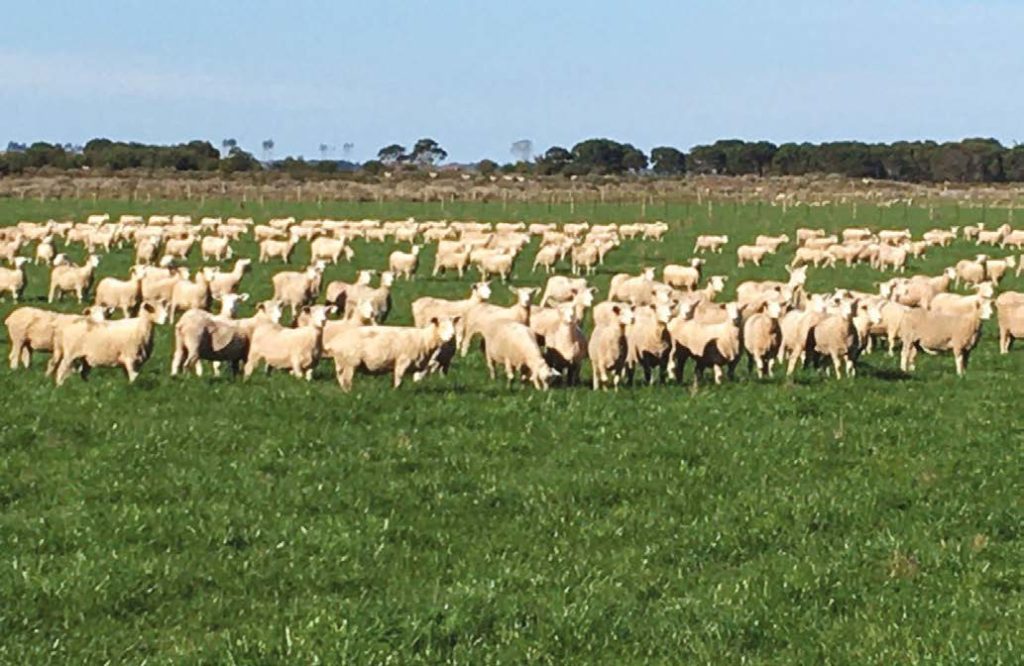
The new Wairere ewe hoggets, July 2020
Your Opportunity
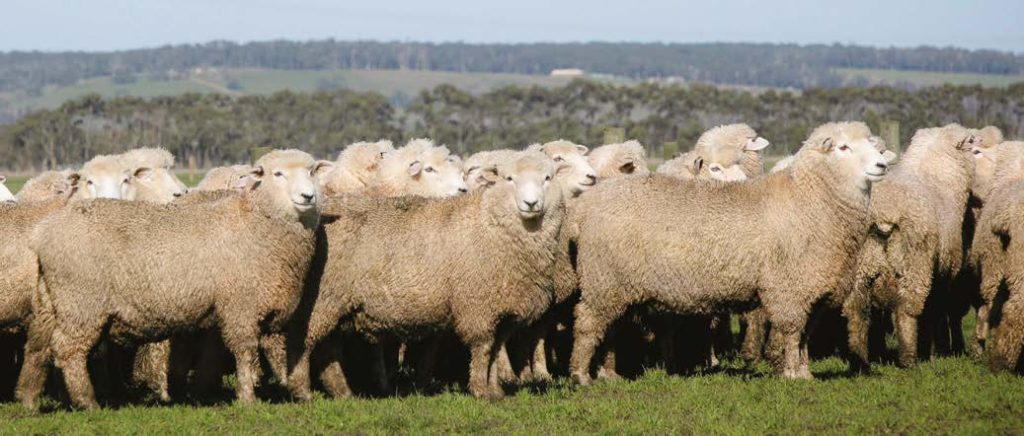
Eleven month old Wairere ram hoggets, July 2017
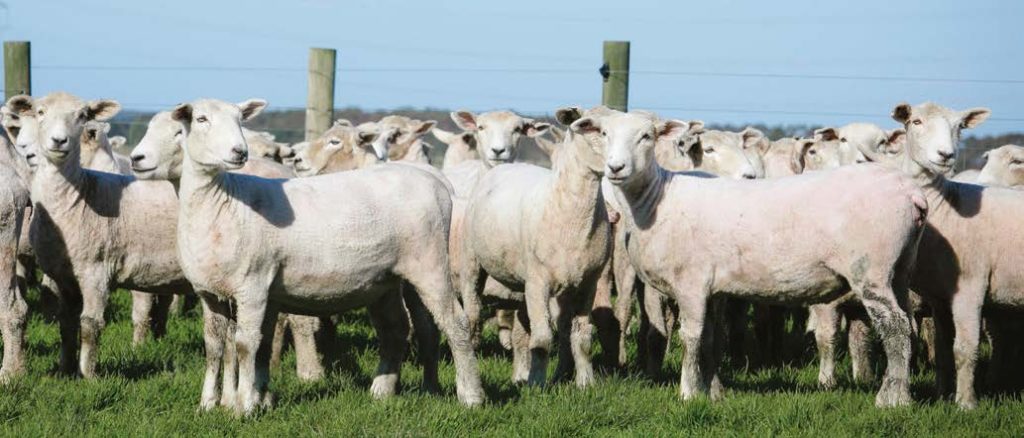
Eleven month old ewe hoggets scanned with twins

Wairere eleven month old ram hoggets, July
Prediction: The prime lamb system will steadily move towards self-replacing flocks dominated by New Zealand maternal genetics.
- In New Zealand the majority of farmers who used composite rams have reverted to using the mainstay Romney breed to restore constitution, uniformity and longevity.
- Romneys have been the dominant dual purpose breed in New Zealand for over a hundred years.
The Wairere Romney, performance recorded in commercial conditions on second class hill country since 1967, has the constitution, sound feet, and productivity to complement the Border Merino or Merino, or form part of a new stabilised Australian prime lamb composite.
Online Ram Booking Form
You can book online by clicking the button below.
Alternatively you can download a copy of this newsletter with a manual form attached here.
